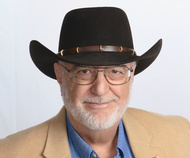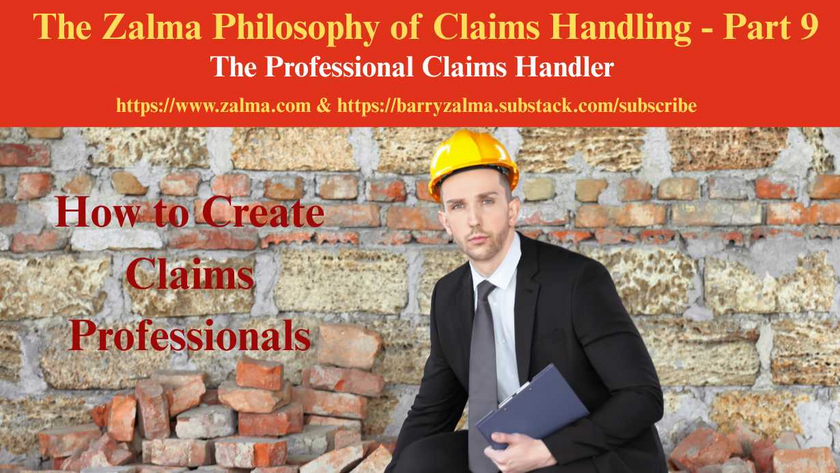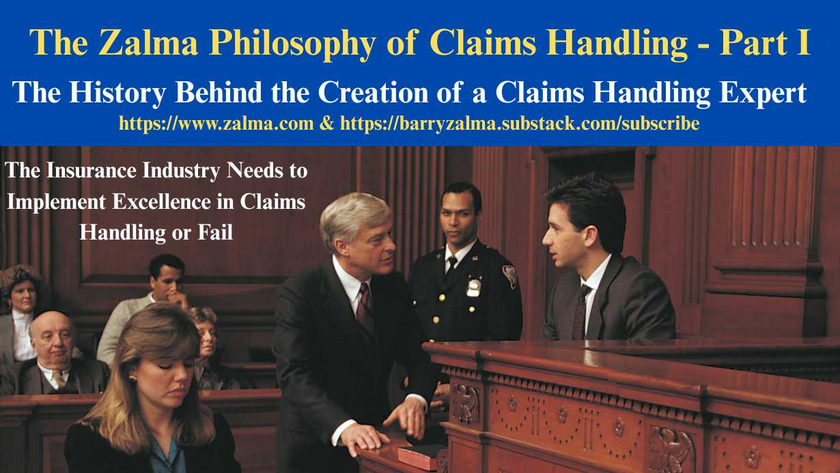
Minnesota Statute Does not Require Insurer to Pay to Bring Church Property up to Code From Damage Predating Loss
Barry Zalma
Read the full article at https://lnkd.in/gCg-xeCi and see the full video at https://lnkd.in/gWDAee5m and at https://lnkd.in/gXvrZxyM and at https://zalma.com/blog plus more than 4350 posts.
St. Matthews Church of God and Christ (St. Matthews) is located in St. Paul, Minnesota sued State Farm Fire and Casualty Company (State Farm) who insured St. Matthews. The policy provided replacement cost coverage for damage to St. Matthews’s buildings.
In St. Matthews Church of God and Christ v. State Farm Fire and Casualty Company, No. A21-0240, Supreme Court of Minnesota (November 23, 2022) St. Matthews sought payment for damaged masonry wall when covered peril only damaged drywall covering the masonry that was cracked as a result of old age.
FACTS
In June 2017, a storm damaged the property of St. Matthews, including the building’s drywall. State Farm agreed to cover repair costs for the damaged property caused by the storm, including removal and replacement of the damaged drywall. When the damaged drywall was removed, cracks in the masonry were discovered. There is no dispute that the cracks in the masonry preexisted the storm. However, because the cracks in the masonry violated the city’s building code, the City of St. Paul (City) would not allow St. Matthews to replace the drywall without also repairing the masonry. St. Matthews requested that State Farm reimburse it for the cost of repairing the masonry.
At issue is the interpretation and application of Minn. Stat. § 65A.10, subd. 1 (2020) (“the statute”). The statute requires replacement cost insurance to cover the cost of repairing any “damaged property in accordance with the minimum code as required by state or local authorities.” In “the case of a partial loss,” replacement cost insurance is required to cover only “the damaged portion of the property.”
St. Matthews’s policy provided replacement cost coverage, meaning that, in the event of a loss, the insurer agreed to compensate for that loss without taking into account depreciation. State Farm’s typical policy does not require it to cover the cost of bringing property that is lost or damaged up to code. But the policy issued to St. Matthews included a Minnesota Endorsement, which states, in relevant part:
"If this coverage is provided on a replacement cost basis we will pay the increased cost of replacing, rebuilding, repairing or demolishing any building in accordance with the minimum code in force at the time of loss as required by state or local authorities, when the loss or damage is caused by a Covered Cause Of Loss. In case of a partial loss to the covered property, we will pay only for the damaged portion of the property." (emphasis added)
By December 2018, State Farm paid St. Matthews $107,053, an amount that included the cost of replacing and repairing the drywall.
St. Matthews was required to obtain a building permit from the City to make the necessary repairs, including replacing the drywall. The City was concerned about the defects in the existing masonry wall which rendered the wall out of code. St. Matthews subsequently requested State Farm to pay the cost of bringing the masonry up to code. In response, State Farm hired a consultant to evaluate the damaged masonry and determine the cause of damage. The consultant concluded that the “cracked and out-of-plumb condition . . . was a longterm condition unrelated to the storm ….”
On cross-motions for summary judgment, the district court granted summary judgment to State Farm.
ANALYSIS
The parties agree that the damaged property at issue is a partial loss and that, before the drywall can be repaired, St. Paul’s city code requires that the masonry be repaired sufficiently to bring it in accordance with minimum code.
The statutory language “[i]n the case of a partial loss . . . this coverage applies only to the damaged portion of the property” is susceptible of only one reasonable interpretation. In the event of a partial loss, the insurer’s obligation is limited to bringing up to code that “portion of the property” that was damaged.
The Supreme Court concluded that the statute means that, when a partial loss like St. Matthews suffered occurs, State Farm’s obligation to bring the damaged portion of the property up to minimum code is limited to repairs necessary to bring up to code that part of the property that was damaged in the insured event. Since it was undisputed that only the drywall was damaged in the storm. It was also undisputed that the masonry was damaged earlier as a result of a different, unknown cause. Consequently, State Farm was not required to pay for repairs to bring the masonry up to code under the statute.
Contrary to St. Matthews’s assertion that the drywall and the masonry were parts of a single damaged item: the wall; which includes both the drywall and the masonry, the masonry wall was independent of the masonry to which it was attached.
All parties agreed that the damage to the masonry was not caused or impacted by the storm. Accordingly, the damage to the masonry was not independently covered by State Farm’s policy. Viewing the project from the perspective of a drywall installer there was nothing in the condition of the masonry that prevented the installation of new drywall.
The Supreme Court concluded that under a plain reading of the statute in the case of a partial loss, replacement cost coverage applies only to the damaged portion of the property covered by a cause of loss. Only the drywall was damaged because of the storm, but the masonry was not. Therefore, only the damaged drywall is subject to the statute’s code-compliance provision.
Under the statute, when a partial loss occurs, an insurer’s obligation to bring the damaged portion of the property up to minimum code is limited to repairs necessary to bring up to code only that part of the property that was damaged in the insured event.
ZALMA OPINION
Insurance requires, by definition, to respond only to a contingent or unknown event. It cannot, and should not, respond to damage that preceded the date the policy came into effect from causes that were not caused by a peril insured against. Since the only damage by the storm was to the drywall and since both parties agreed that the damage to the masonry was not caused by the storm that damaged the drywall. Unfortunately for the church it did not acquire code compliance coverage and the statute it relied on was not as broad as the church desired.
(c) 2022 Barry Zalma & ClaimSchool, Inc.
Subscribe and receive videos limited to subscribers of Excellence in Claims Handling at locals.com https://zalmaoninsurance.locals.com/subscribe.
Go to substack at substack.com/refer/barryzalma Consider subscribing to my publications at substack at substack.com/refer/barryzalma
Barry Zalma, Esq., CFE, now limits his practice to service as an insurance consultant specializing in insurance coverage, insurance claims handling, insurance bad faith and insurance fraud almost equally for insurers and policyholders. He practiced law in California for more than 44 years as an insurance coverage and claims handling lawyer and more than 54 years in the insurance business. He is available at http://www.zalma.com and [email protected].
Write to Mr. Zalma at [email protected]; http://www.zalma.com; http://zalma.com/blog; daily articles are published at
Zalma on Insurance
By Barry Zalma
. Go to the podcast Zalma On Insurance at https://anchor.fm/barry-zalma; Follow Mr. Zalma on Twitter at https://twitter.com/bzalma; Go to Barry Zalma videos at Rumble.com at https://rumble.com/c/c-262921; Go to Barry Zalma on YouTube- https://www.youtube.com/channel/UCysiZklEtxZsSF9DfC0Expg; Go to the Insurance Claims Library – https://zalma.com/blog/insurance-claims-library
Insurer’s Exclusion for Claims of Assault & Battery is Effective
Post 5250
Read the full article at https://lnkd.in/gBzt2vw9, see the video at https://lnkd.in/gEBBE-e6 and at https://lnkd.in/gk7EcVn9, and at https://zalma.com/blog plus more than 5250 posts.
Bar Fight With Security is an Excluded Assault & Battery
In The Cincinnati Specialty Underwriters Insurance Company v. Mainline Private Security, LLC, et al., Civil Action No. 24-3871, United States District Court, E.D. Pennsylvania (December 16, 2025) two violent attacks occurred in Philadelphia involving young men, Eric Pope (who died) and Rishabh Abhyankar (who suffered catastrophic injuries). Both incidents involved security guards provided by Mainline Private Security, LLC (“Mainline”) at local bars. The estates of the victims sued the attackers, the bars, and Mainline for negligence and assault/battery. The insurer exhausted a special limit and then denied defense or indemnity to Mainline Private Security.
INSURANCE COVERAGE
Mainline had purchased a commercial ...
Marine Insurer May Dispose of Vessel to Avoid Waste
Post 5249
Read the full article at https://lnkd.in/gfn_UHdp, see the video at https://lnkd.in/gDWVccnr and at https://lnkd.in/gv9nsBqk, and https://zalma.com/blog plus more than 5200 posts.
In Western World Insurance Company v. The Estate Of Shawn Arsenault, No. 25-cv-13413-PGL, United States District Court, D. Massachusetts (December 17, 2025) the USDC was asked to resolve a marine insurance dispute after the sinking of the F/V Seahorse, a commercial fishing vessel, off Cape Cod on June 8, 2025. The vessel’s owner and operator, Shawn Arsenault, died in the incident.
Western World Insurance Company issued a hull insurance policy for the vessel. With no personal representative yet appointed for the estate, the insurer cannot determine the proper payee for the insurance proceeds.
The insurer paid for the vessel’s recovery and removal, and the vessel is now with a salvage company, incurring substantial storage fees. The insurer determined the loss is covered under the ...
Marine Insurer May Dispose of Vessel to Avoid Waste
Post 5249
Read the full article at https://lnkd.in/gfn_UHdp, see the video at https://lnkd.in/gDWVccnr and at https://lnkd.in/gv9nsBqk, and https://zalma.com/blog plus more than 5200 posts.
In Western World Insurance Company v. The Estate Of Shawn Arsenault, No. 25-cv-13413-PGL, United States District Court, D. Massachusetts (December 17, 2025) the USDC was asked to resolve a marine insurance dispute after the sinking of the F/V Seahorse, a commercial fishing vessel, off Cape Cod on June 8, 2025. The vessel’s owner and operator, Shawn Arsenault, died in the incident.
Western World Insurance Company issued a hull insurance policy for the vessel. With no personal representative yet appointed for the estate, the insurer cannot determine the proper payee for the insurance proceeds.
The insurer paid for the vessel’s recovery and removal, and the vessel is now with a salvage company, incurring substantial storage fees. The insurer determined the loss is covered under the ...
Zalma’s Insurance Fraud Letter
Read the full article at https://lnkd.in/dG829BF6; see the video at https://lnkd.in/dyCggZMZ and at https://lnkd.in/d6a9QdDd.
ZIFL Volume 29, Issue 24
Subscribe to the e-mail Version of ZIFL, it’s Free! https://visitor.r20.constantcontact.com/manage/optin?v=001Gb86hroKqEYVdo-PWnMUkcitKvwMc3HNWiyrn6jw8ERzpnmgU_oNjTrm1U1YGZ7_ay4AZ7_mCLQBKsXokYWFyD_Xo_zMFYUMovVTCgTAs7liC1eR4LsDBrk2zBNDMBPp7Bq0VeAA-SNvk6xgrgl8dNR0BjCMTm_gE7bAycDEHwRXFAoyVjSABkXPPaG2Jb3SEvkeZXRXPDs%3D
Zalma’s Insurance Fraud Letter (ZIFL) continues its 29th year of publication dedicated to those involved in reducing the effect of insurance fraud. ZIFL is published 24 times a year by ClaimSchool and is written by Barry Zalma. It is provided FREE to anyone who visits the site at http://zalma.com/zalmas-insurance-fraud-letter-2/
Zalma’s Insurance Fraud Letter
Merry Christmas & Happy Hannukah
Read the following Articles from the December 15, 2025 issue:
Read the full 19 page issue of ZIFL at ...
The Professional Claims Handler
Post 5219
Posted on October 31, 2025 by Barry Zalma
An Insurance claims professionals should be a person who:
Can read and understand the insurance policies issued by the insurer.
Understands the promises made by the policy.
Understand their obligation, as an insurer’s claims staff, to fulfill the promises made.
Are competent investigators.
Have empathy and recognize the difference between empathy and sympathy.
Understand medicine relating to traumatic injuries and are sufficiently versed in tort law to deal with lawyers as equals.
Understand how to repair damage to real and personal property and the value of the repairs or the property.
Understand how to negotiate a fair and reasonable settlement with the insured that is fair and reasonable to both the insured and the insurer.
How to Create Claims Professionals
To avoid fraudulent claims, claims of breach of contract, bad faith, punitive damages, unresolved losses, and to make a profit, insurers ...

The History Behind the Creation of a Claims Handling Expert
The Insurance Industry Needs to Implement Excellence in Claims Handling or Fail
Post 5210
This is a change from my normal blog postings. It is my attempt. in more than one post, to explain the need for professional claims representatives who comply with the basic custom and practice of the insurance industry. This statement of my philosophy on claims handling starts with my history as a claims adjuster, insurance defense and coverage lawyer and insurance claims handling expert.
My Training to be an Insurance Claims Adjuster
When I was discharged from the US Army in 1967 I was hired as an insurance adjuster trainee by a professional and well respected insurance company. The insurer took a chance on me because I had been an Army Intelligence Investigator for my three years in the military and could use that training and experience to be a basis to become a professional insurance adjuster.
I was initially sat at a desk reading a text-book on insurance ...














